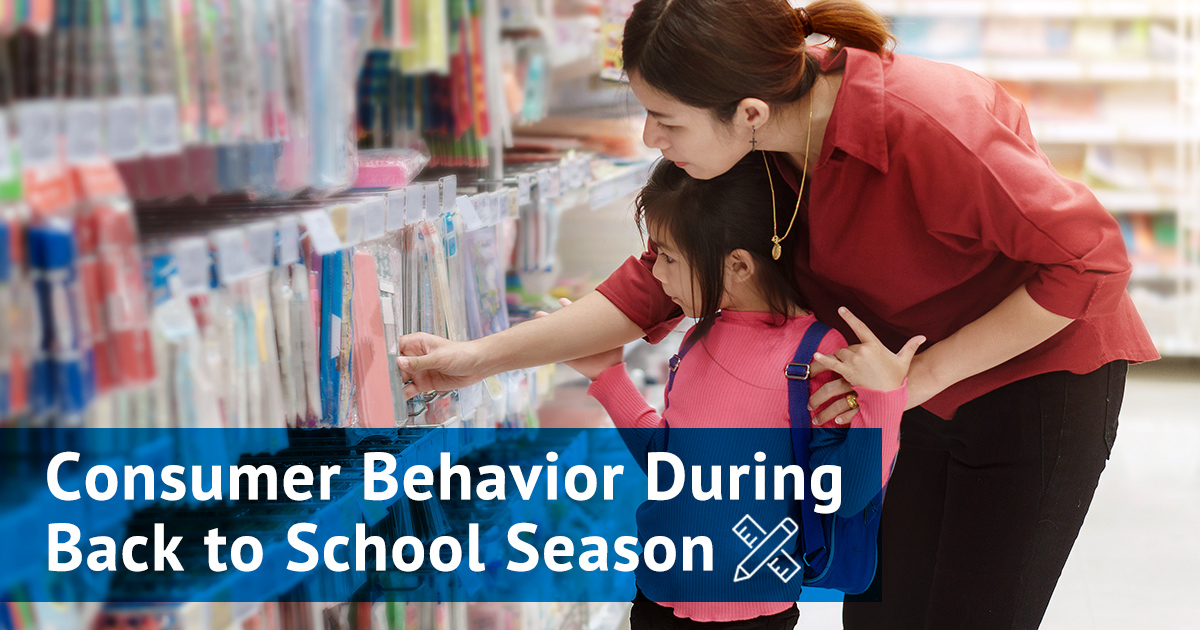
The back to school season is close to schedule and here comes how consumer behavior affects almost every aspect of society and the economy. One of these is how the supply chain becomes an unheard-of pressure for these changing customer demands, making it difficult for merchants to make quick adjustments.
Back to School Spending in the Philippines
Back to school means back to spending again on school supplies. Filipino families often include this in their annual budgeting to spare some for the needs of the kids for school. But spending poses a lot of questions and some of these are answered below.
What is the average spending of Filipino families during the back to school season?
On average, Filipino families allocate a portion of their budget to back to school expenses and it often prepared on the earlier months before school starts. According to Rakuten Insight, the average spending ranges from PHP 10,000 to PHP 15,000, covering school supplies, clothing, and other educational materials.
The type of school (public vs. private), the educational attainment level (elementary, high school, or college), and the socioeconomic position of the family are some of the factors that affect the variation in spending. Higher educational levels and enrollment in private schools are frequently linked to higher spending.
How has inflation impacted back to school spending?
Owing to inflation, more than half of consumers want to spend more than they did the year before, primarily as a result of growing prices for items and increased demand for technologically advanced educational resources.
The price of school supplies and other necessities goes up along with the cost of living, which puts further financial strain on families. Many Filipino families are becoming more cost-conscious as a result of inflation and are looking for ways to save money.
Popular Product Categories
The back to school season heralds a surge in consumer activity, with certain product categories standing out due to their high demand. Understanding these trends is crucial for retailers and manufacturers aiming to meet consumer needs efficiently.
What are the most purchased items for back to school?
The most purchased items include school supplies (notebooks, pens, paper), clothing, footwear, and electronics such as laptops and tablets. A significant budget is allocated to uniforms and educational materials.
- School Supplies: Notebooks, pens, pencils, backpacks, and other basic school supplies are at the top of shopping lists.
- Clothing and Footwear: Parents still invest in new uniforms, shoes, and everyday school wear.
How has the demand for technology changed?
There is an increasing demand for technology-driven educational tools, contributing to a significant portion of the back to school budget.
- Decreased Spending on Electronics: Compared to the height of the pandemic, there is less emphasis on purchasing electronic devices, given the return to in-person learning.
- Focus on Educational Tools: Calculators, educational software, and e-learning accessories remain relevant for enhancing the learning experience and still hold value.
- Technology for Safety and Connectivity: Items like portable chargers and durable cases, continue to be in demand as well as connectivity tools such as Wi-Fi boosters and headsets that ensure reliable access to online resources when needed.
Economic Factors Influencing Consumer Behavior
As parents and students prepare for the new academic year, their purchasing decisions are significantly influenced by the broader economic environment.
How does economic uncertainty affect back to school spending?
Economic uncertainty has made many families more price-sensitive, with 68% of respondents indicating that they check prices and compare deals more rigorously before making purchases.
The recent Deloitte survey highlights this trend, showing a marked increase in spending on school supplies while expenditure on electronics and apparel has declined. Retailers must recognize this shift and adjust their inventory and marketing strategies to cater to the heightened demand for basic educational necessities.
What strategies do consumers use to manage back to school expenses?
Consumers are increasingly looking for sales, discounts, and promotions to manage back to school expenses
- Price Sensitivity and Comparison Shopping: Retailers that offer promotions and discounts are likely to attract more price-conscious shoppers during this period.
- Prioritization and Budgeting: Families often set strict budgets for back to school shopping and stick to a list of essential items to avoid impulse purchases.
- Bulk Buying or Purchasing Generic Brands: By buying in larger quantities, they can often secure lower prices per unit, making it a practical choice for items that will be used throughout the school year. Generic brands also offer a more affordable alternative to name-brand products without compromising on quality.
Understanding these consumer behavior strategies allows retailers to better align their offerings with the needs and preferences of their customers, ensuring a successful back to school shopping season even amid economic challenges.
Role of Logistics Players in Back to School Shopping
Getting all those notebooks, gadgets, and new clothes from factories to stores is no small task. That’s where logistics companies come in. Without them running a tight ship, back-to-school shopping could be a real headache for everyone involved.
How do logistics companies support back to school shopping?
Logistics players such as Transportify, Lalamove, GrabExpress, and J&T Express have been crucial in facilitating timely deliveries for online purchases. Their role has grown as e-commerce continues to rise, with logistics services becoming a vital part of the back to school shopping experience. In general, this is how logistics companies support back to school shopping:
- Move school supplies from manufacturers to stores
- Make sure things arrive on time when demand is high
- Keep track of what’s in stock so stores don’t run out
- Use advanced tech to tell everyone where shipments are
- Hire extra help during the busy season
- Keep things moving smoothly to meet customer needs
What challenges do logistics companies face during the back to school season?
Busy times like back to school season create headaches for logistics companies:
- More packages to handle
- Busy roads slowing things down
- Tricky “last mile” deliveries to homes
Big challenges they face:
- Sudden flood of orders
- Need for more trucks and warehouse space
- Keeping the right amount of stuff in stock
- Getting packages to you on time, even in traffic
To cope, they might:
- Rejig their delivery networks
- Provide extra trucks
- Improve their forecasting
To wrap up, delivery companies play a big role in making back to school shopping work smoothly in the Philippines. They face some tough problems, but it’s important they figure them out so families can get what they need. When these companies step up their game in understanding the consumer behavior, it really helps stores during the busy school shopping season.
SEE ALSO:
